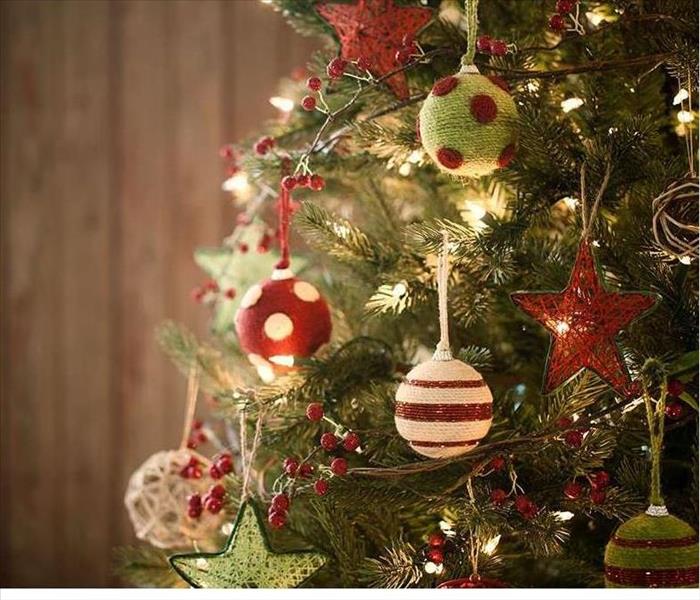Christmas Tree Safety Checklist
12/11/2020 (Permalink)
My Christmas Fire Safety Checklist
1. Fire Safety for Artificial Trees?
This appears to be the safest choice, as long as it’s UL-listed. Artificial trees can still catch fire, especially if candles are involved, so look for one that is “flame resistant” or “flame retardant.”
2. Fire Safety for a Fresh Tree?
The fresher, the safer. It’s got more natural moisture that way. So check out the needles… if they snap or fall off easily, the tree is too dry. When you get it home, cut 2 inches off the bottom of the trunk and place it in the tree stand with plenty of water. It’ll need about a gallon of water every couple of days, but it will probably need extra water in the first day or two. Studies show that a dry tree is likely to catch fire unintentionally, but one that is kept watered is very unlikely to do so.
3. Where You Place Your Tree Matters
For optimal fire safety, place your tree strategically away from heat sources like candles, space heaters, vents, radiators and fire places — and don’t block stairways or exits! (PSST – And don’t forget about candle safety! Candles are apparently a major culprit around the holidays.)
4. What about Christmas Tree Lights?
Again, UL-listed is the way to go. That’s the independent testing organization that makes sure lights are safe. Look for the label!
Be sure to pay attention to whether your lights are for indoor or outdoor use. (It matters.)
LED lights rock. They don’t get as hot, and the plastic casing is less likely to break than a glass bulb. They last longer and are more energy efficient, too!
5. Check Your Decor for Damage.
Electrical problems cause about 1/3 of Christmas tree fires. So check last year’s decor for damage — a squirrel in the attic eating through the wire, for example. Outdoor lights might wear out more quickly from season to season, so check for damage there, too…. loose bulb sockets, damaged wires or plugs. Those are a no-no.
6. Don’t Overload Your Sockets!
Many manufacturers will tell you how many lights you can string together, but a good rule of thumb is a maximum of 3 strands. So don’t overload a socket or extension cord, even if you use a surge protector.
7. Turn Your Lights Off When Unattended.
That means before leaving the house or going to bed. You don’t want lights left on to cause a problem when you’re not around to act fast. And if you use a remote switch or foot switch, they can be less of a hassle to turn off. Bonus!
8. Dispose of Your Live Tree Soon!
Now hear this: After Christmas is over, have a good cry and then recycle your live tree soon. This was the most surprising thing I found: A 2013 report from the National Fire Protection Association shows that HALF of Christmas tree fires occur in the 20 days AFTER Christmas. Even a well-watered tree should be taken down after 4 weeks, according to the NFPA. So if you put your life tree up right after Thanksgiving, take it down right after Christmas… not on New Year’s Day.
It also goes worth saying that about 20% of these after-Christmas fires were set intentionally, as a method of disposing the tree… but then the fire spread to the house. So dispose of the tree properly — recycle it! — when its needles are falling off. Don’t go into post-Christmas denial!
While we’re on the topic of un-decorating (Is that a word? It is now.), removing your outdoor lights sooner will help them last longer and stay usable next season! Hit the after-Christmas sales to replace your worn-out decorations for a fraction of the price. And who doesn’t love a good deal?






 24/7 Emergency Service
24/7 Emergency Service
